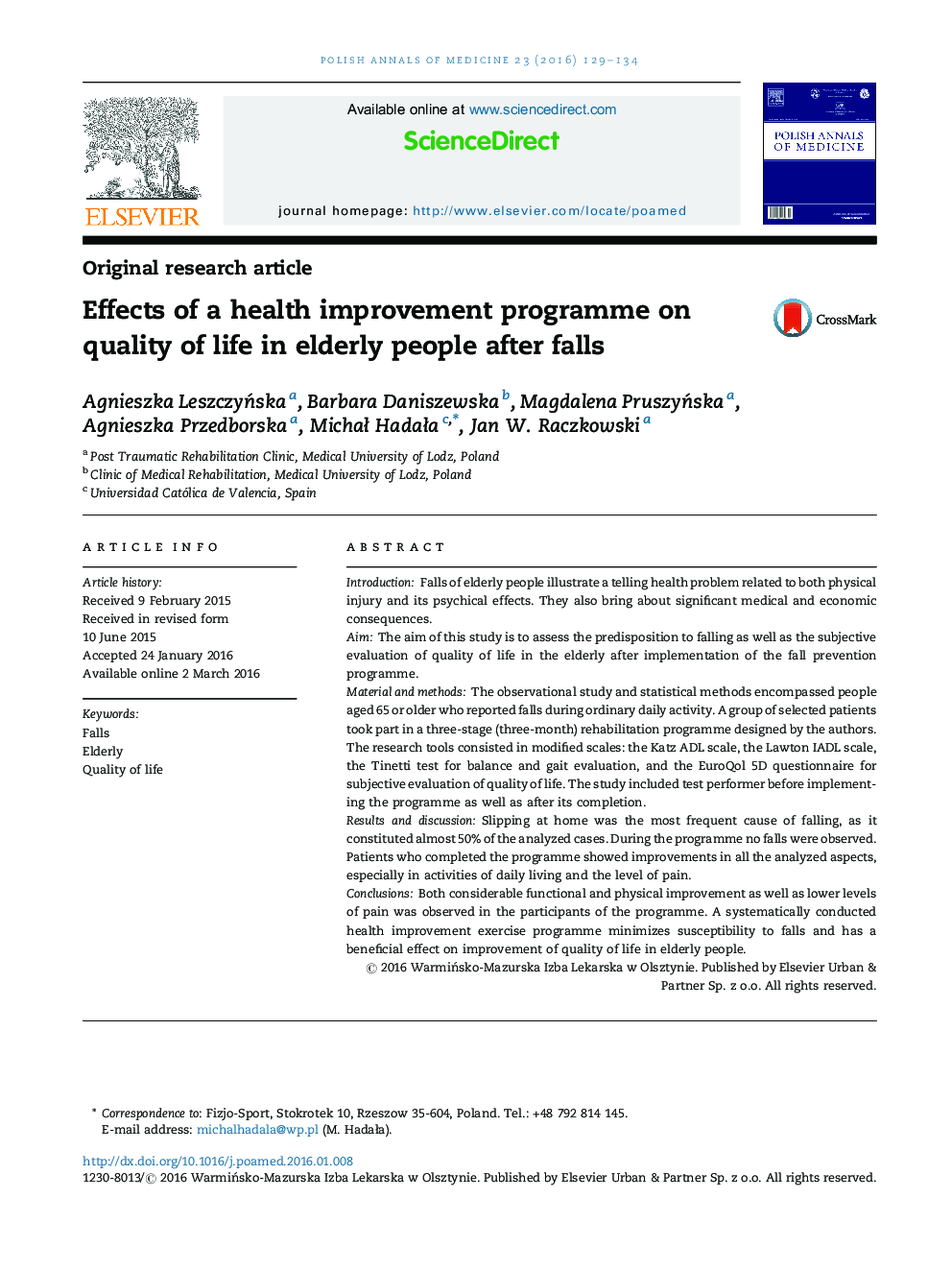| کد مقاله | کد نشریه | سال انتشار | مقاله انگلیسی | نسخه تمام متن |
|---|---|---|---|---|
| 2675298 | 1564449 | 2016 | 6 صفحه PDF | دانلود رایگان |
کلمات کلیدی
1.مقدمه
2.هدف
3.ابزار و روش ها
جدول 1- برنامه
4.نتایج
جدول 2. نتایج شرکت کنندگان واجد صلاحیت برای برنامه جلوگیری از زمین خوردن، با توجه به خطر زمین خوردن
5. بحث
شکل 2.نمره توانایی کارکردی و شرایط فیزیکی شرکت کنندگان (خطر زمین خوردن). مقایسه نمرات افراد قبل و بعد از اجرای برنامه
شکل3. نمره ارزیابی ذهنی کیفیت زندگی قبل و بعد از اجرای برنامه تمرینی
شکل 4. هیستوگرام نمرات برای فعالیت زندگی روزمره برای شرکت کنندگان قبل و بعد از برنامه تمرینی
شکل 5. نمرات در خصوص درد قبل و بعد از اجرای برنامه تمرینی
شکل 6. نمرات برای متغیر اختلالات روانی قبل و بعد از اجرای برنامه تمرینی
6.نتیجه گیری
IntroductionFalls of elderly people illustrate a telling health problem related to both physical injury and its psychical effects. They also bring about significant medical and economic consequences.AimThe aim of this study is to assess the predisposition to falling as well as the subjective evaluation of quality of life in the elderly after implementation of the fall prevention programme.Material and methodsThe observational study and statistical methods encompassed people aged 65 or older who reported falls during ordinary daily activity. A group of selected patients took part in a three-stage (three-month) rehabilitation programme designed by the authors. The research tools consisted in modified scales: the Katz ADL scale, the Lawton IADL scale, the Tinetti test for balance and gait evaluation, and the EuroQol 5D questionnaire for subjective evaluation of quality of life. The study included test performer before implementing the programme as well as after its completion.Results and discussionSlipping at home was the most frequent cause of falling, as it constituted almost 50% of the analyzed cases. During the programme no falls were observed. Patients who completed the programme showed improvements in all the analyzed aspects, especially in activities of daily living and the level of pain.ConclusionsBoth considerable functional and physical improvement as well as lower levels of pain was observed in the participants of the programme. A systematically conducted health improvement exercise programme minimizes susceptibility to falls and has a beneficial effect on improvement of quality of life in elderly people.
Journal: Polish Annals of Medicine - Volume 23, Issue 2, June 2016, Pages 129–134
